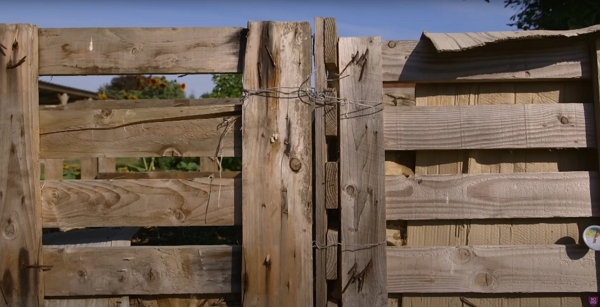Charles explains how to build a very cheap compost heap system that you can construct yourself in very little time.
Thanks to Charles Dowding for sharing his wisdom and knowledge! I wrote the following notes watching the video published on Charles Dowding’s channel. You can watch it using this YouTube link.
This system is applying to more people than Charles’s huge compost heap I have taken not about. See my other notes on the matter using the Compost tag.
A brief explanation of the system
Charles simply uses wood pallets, from which he knocks off the bottom to make them more lightweight.
Then he attaches the sides with a wire at each top and bottom corners.
With no posts in the corner and no weeding out the area, those heaps require no complex site preparation.
It’s really simple to make.
How long does it take to fill the heaps
For Charles, it takes two months with his large garden (one and a half acres).
It might take less for you. Hence, you will need to adjust the size of the heap.
Personal note
For example, I don’t produce nor possess enough material to fill a heap made of full-sized pallets.
So I made one from half of a pallet and I will see if I need bigger or not as I manage to gather more material.
Turning the compost
You don’t need to turn it often. Save yourself some energy!
Charles does it once in the lifecycle of compost making.
With the presented heap system, you only need to:
- remove the wires from one side (see at 3:10 in the vlog)
- and use a manure fork to turn the compost from one heap to the neighbor (see at 3:20 in the vlog)
The manure fork is easier to use than a digging fork. Buy one! If you can, look at the place where they sell second-hand items. I have found mine for 3 euros that way!
With a three-bay structure, you take the content of the side heaps into the middle one.
Timings when making the compost
Turning depends on how long it takes to fill the heap.
I’m sure how long you have to wait, but let’s take this simple example.
Degradation is visible when the content level of the heap decreases. If you fill full your heap, turn it when it’s half full.
Then you simply follow levels in a given to know when to turn into the middle.
Why cardboard around the edges
Popular sayings tell us that you need slatted sides to let the air in.
Charles found out it isn’t true.
With cardboard, you keep in the heap:
- the moisture
- the heat
Creating an air hole
Using a wood post or a tube, you can create an air hole in your heap.
What about filling the heap in layers
Why would you want to do that?
If you put a huge layer of grass clippings, for example, as it degrades, it might rot and air might not be sufficiently present.
Charles provides a concrete example:
- set a 7 cm layer of grass clippings
- then set a 2 cm layer of dead leaves or paper or cardboard.
In terms of volume, you put more green material than brown material.
However, in terms of dry matter, it represents 50/50 ratio.
Also, even the green vegetable waste like courgette leaves contains:
- the leaf itself (green material)
- the stem (more brown, even if it looks green ;))
About weeds and seeds
You can put them on: bindweed, couch grass, flower seeds. Just put them in the middle and cover them well and they won’t reproduce!
Heat provides what you need to kill the weeds and the seeds.
In this temperature range, you retain the fungi activity that is very important too.
To get a hot compost, you need nitrogen-rich material, aka green material:
- Fresh leaves
- Grass
- Kitchen and food waste
- Fresh manure, either cow or horse
- Coffee grounds
If the heat does go to high, you simply add more brown material.
What about the size of brown material
It’s important to cut, or shred if you own a shredder, the large and hard waste.
Charles shows at 11:45 in the vlog how to trim a sunflower stem.
Why? It brings too much air in the heap.
The typical brown materials, aka carbon-rich materials are:
- Small piece of woody material
- Old or dried tree leaves
- Dry stems
- Soil
- Paper and cardboard
Watering a heap
It isn’t always necessary, if it rains normally.
But if the weather is really dry, you will need to add water.
How do you know you need water and how much do you need?
Well, it’s something you need to assess from your personal circumstances: weather, material you put in.
In the early stage, you decide based on how it looks and feels.
Later, when the material has degraded enough, use the squeeze technique described in this article.
Conclusion
Making compost is like taking care of a pet. Take care of it.
And your vegetable beds will enjoy the great nourishment from it!








